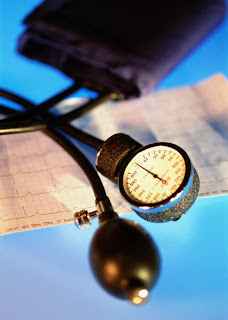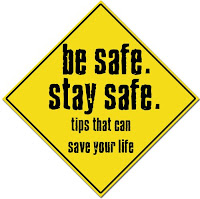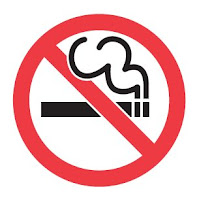
Remember Ignaz Semmelweis? Of course you don't. But you're in his debt nonetheless, because it was Dr. Semmelweis who first demonstrated over a hundred years ago that routine handwashing can prevent the spread of disease.
"Dr. Semmelweis worked in a hospital in Vienna whose maternity patients were dying at such an alarming rate that they begged to be sent home," said Julie Gerberding, M.D., director of CDC's Hospital Infections Program. "Most of those dying had been treated by student physicians who worked on cadavers during an anatomy class before beginning their rounds in the maternity ward."
Because the students didn't wash their hands between touching the dead and the living--handwashing was an unrecognized hygienic practice at the time--pathogenic bacteria from the cadavers regularly were transmitted to the mothers via the students' hands.
"The result was a death rate five times higher for mothers who delivered in the hospital than for mothers who delivered at home" said Dr. Gerberding.
In an experiment considered quaint at best by his colleagues, Dr. Semmelweis insisted that his students wash their hands before treating the mothers--and deaths on the maternity ward fell fivefold.
"This was the beginning of infection control," Dr. Gerberding said. "It was really a landmark achievement, not just in healthcare settings, but in public health in general because today the value of handwashing in preventing disease is recognized in the community, in schools, in child care settings, and in eating establishments."
Healthcare specialists generally cite handwashing as the single most effective way to prevent the transmission of disease. "This is one healthcare infection control measure that has successfully spread throughout the community," she said. "Good hygiene in general, and sterilization and disinfection in particular, are other standards that began largely in hospitals and have become widely used elsewhere. And we're always looking for others."
She cited the ongoing 4th Decennial International Conference on Nosocomial and Healthcare-associated Infections in Atlanta as an example of the concerted effort worldwide to prevent and control infections. Sponsored by CDC, the conference has brought together over 2,000 international experts in disease prevention to share information and develop strategies for infection control.
"It's an astonishing amount of knowledge and expertise gathered in a single building," she said. "But for all our expertise and the tremendous advances we've made in technology and new treatments, we constantly remind ourselves of the basic in infection control...wash your hands!"
In the healthcare setting, handwashing can prevent potentially fatal infections from spreading from patient to patient, and from patient to healthcare worker and vice-versa. In the home, it can prevent infectious diseases such as diarrhea and hepatitis A from spreading from family member to family member and, sometimes, throughout a community.
"The basic rule in the hospital is wash your hands between patients," said Dr. Gerberding. "In the home, it's wash them before preparing food, after changing diapers, and after using the bathroom."
Unquestioned today as the most important tool in the healthcare worker's arsenal for preventing infection, handwashing was not readily accepted in Dr. Semmelweis's era. Indeed, his pleas to make handwashing a routine practice throughout the hospital were largely met with derision. Another 50 years would pass before the importance of handwashing as a preventive measure would be widely accepted by the medical profession.
"But it's the standard now," said Dr. Gerberding. "And we can't begin to count the thousands upon thousands of lives that have been saved because of Dr. Semmelweis's discovery." Unrecognized for the most part by the general public, Dr. Semmelweis is firmly entrenched in medical lore as a pioneer who made one of the greatest contributions in the history of public health. In hospitals and homes throughout the world, the simple and inexpensive measure of handwashing continues to serve as a bulwark against disease.
CDC Says "Prevent Contamination" by Hand
CDC cites five common household scenarios in which disease-causing germs can be transmitted by contaminated hands.
Hands to food: germs are transmitted from unclean hands to food, usually by an infected food preparer who didn't handwash after using the toilet. The germs are then passed to those who eat the food.
Infected infant to hands to other children: during diaper changing, germs are passed from an infant with diarrhea to the hands of a parent; if the parent doesn't immediately wash his or her hands before handling another child, the germs that cause diarrhea are passed to the second child.
Food to hands to food: germs are transmitted from raw, uncooked foods, such as chicken, to hands; the germs are then transferred to other foods, such as salad. Cooking the raw food kills the initial germs, but the salad remains contaminated.
Nose, mouth, or eyes to hands to others: germs that cause colds, eye infections, and other illnesses can spread to the hands by sneezing, coughing, or rubbing the eyes and then can be transferred to other family members or friends.
Food to hands to infants: germs from uncooked foods are transferred to hands and then to infants. If a parent handling raw chicken, for example, doesn't wash his or her hands before tending to an infant, they could transfer germs such as salmonella from the food to the infant.
Handwashing can prevent the transfer of germs in all five of these scenarios. CDC recommends vigorous scrubbing with warm, soapy water for at least 15 seconds.
 We're familiar with the pattern. It starts with a commitment to weight loss, complete with energetic bouts of exercise and thousands of calories burned. Finally, your weight goals are within reach! But then it's wedding season and you decide to go on maintenance for awhile … just so you can enjoy that cake with a clear conscience. Before you know it, you start to gain weight again and you lose all of those health benefits you worked so hard for in the first place.
We're familiar with the pattern. It starts with a commitment to weight loss, complete with energetic bouts of exercise and thousands of calories burned. Finally, your weight goals are within reach! But then it's wedding season and you decide to go on maintenance for awhile … just so you can enjoy that cake with a clear conscience. Before you know it, you start to gain weight again and you lose all of those health benefits you worked so hard for in the first place.


.jpg)







